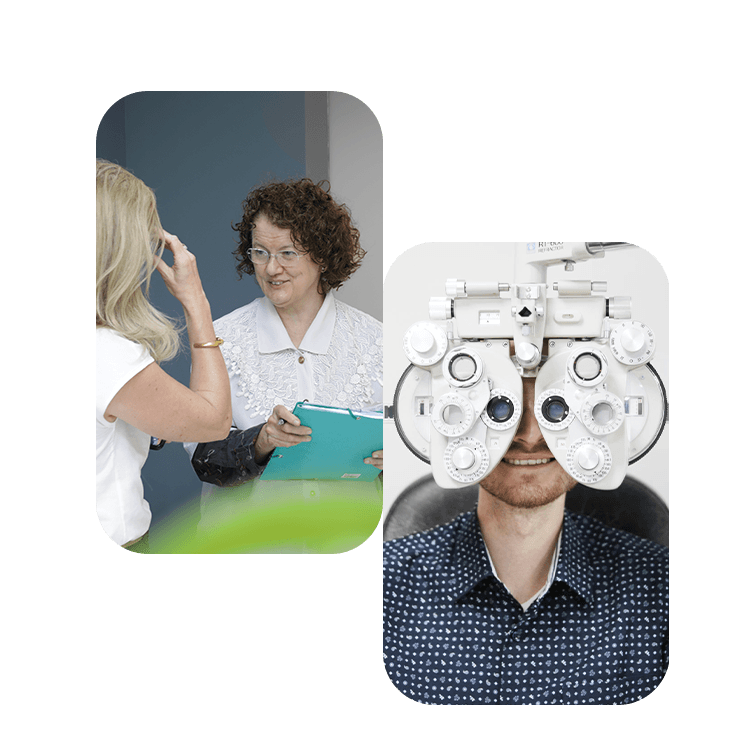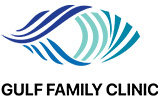Mon - Sat: 8:00 AM - 6:00 PM
Sunday: CLOSED
Eye Care Designed for You
We provide the highest level of eye care in the safest possible environment for your family.
Make an Appointment
Online Schedule

Orthokeratology (Ortho-K) in Dubai
A non-surgical procedure using specially designed contact lenses to gently reshape the curvature of the eye to improve vision overnight.
Ortho-K is a non-invasive, non-surgical option for individuals who wish to significantly slow or stop the progression of their myopia. There is continuing research on the control of myopia (nearsightedness) in children through the use of Ortho-K lenses, and results are very promising.
Individuals who need optical correction, but wish to be free of lenses and glasses during the day while maintaining clear and comfortable vision, will benefit from our orthokeratology treatment in Dubai.
Performed by an experienced pediatric ophthalmologist in Dubai, orthokeratology for myopia control uses specially designed contact lenses or molds to gently reshape the curvature of the eye to improve vision. Orthokeratology lenses are worn at night to temporarily correct myopia or nearsightedness, so that during waking hours, glasses and contact lenses are not needed.
Make an Appointment
WhatsApp Us





Ortho-K FAQ's
Who is suitable for this treatment?
Orthokeratology is perfectly suited for anybody who wants clear natural vision all day, every day but have the following specific preferences or possess the following conditions:
- Mild to moderate myopia (-0.75 to –5.00D), and more
- Mild hyperopes, up to +3.00D
- Suitable Presbyopia – monovision corrections
- Active individuals or those with occupational demands that are not suited to disposable contact lenses
- Those who lose their contacts easily, or suffer from allergies from some contact lenses
- Those who consider getting refractive surgery because of the freedom it provides, but are worried about the risks
- Those who have difficulty with dry eyes from air conditioning, computer use or dusty environments
- Those who find soft contact lenses do not fulfill the comfort demands their lifestyle places on their eyes
Why Ortho-K?
Increasing myopia is becoming an epidemic. In some Asian countries, up to 80% of adults have myopia. Recent findings on the ability of Ortho-K lenses to slow the progression of myopia show that the lens modality could become a major technique for the control of myopic progression.
How does Orthokeratology work?
Orthokeratology lenses are customized contact lens molds. They are worn each night and removed each morning. The molding that occurs overnight allows for clear vision at all distances during the day without glasses or daytime contact lenses. The Ortho-K lenses are comfortable and do not interfere with sleep. They last approximately a year and are worn as long as myopia progression is considered a risk or until freedom from daytime lens correction is no longer desired.
What are the benefits of Ortho-K?
• Vision improvement while you sleep
• Non-surgical/painless
• Reversible/low risk
What results can you expect from Ortho-K?
Orthokeratology specialists usually aim for 20/20 vision after Ortho-K and corneal refractive therapy. There are times some patients still need glasses, but with a lower prescription.
Once your eyes reach the desired prescription, you will need to wear lenses when you sleep or during part of the day to maintain your prescription. Discontinuing lens wear altogether allows your corneas to gradually regress to their original shape or close to it.
Is orthokeratology in the UAE a new concept?
Reshaping the cornea with contact lenses to improve vision, otherwise known as Ortho-K, was first introduced to contact lens practitioners by George Jessen in 1962. The initial flurry into orthokeratology was hindered by poor technology and understanding of the criteria needed to successfully and predictably correct myopia.
With these changes, over about 50 years, there has been an upsurge in interest in the technique among contact lens specialists, researchers and academics that has resulted in a better and safer lens material and predictable correction of myopia.
An exponential increase in the publications on this technique and more funding for research from governments and industry bodies started the birth of Orthokeratology in 1992 and was given an FDA approval in 2002.
Are there any side effects?
The biggest side effect of controlling myopia with Ortho-K lenses is actually a benefit, namely there are no lenses to be worn during the day, during which time vision remains clear.
You might experience glare and halos that will be reduced with time, but may never completely go away. As with LASIK, patients with large pupils are especially susceptible to this.
The greatest potential adverse risk for any contact lens patient is infection. Patient’s compliance is of utmost importance. If you properly care for your eyes as instructed, the risk of infection or adverse effects are very low. Parents are recommended to supervise young children in the insertion, removal and care of their lenses.


